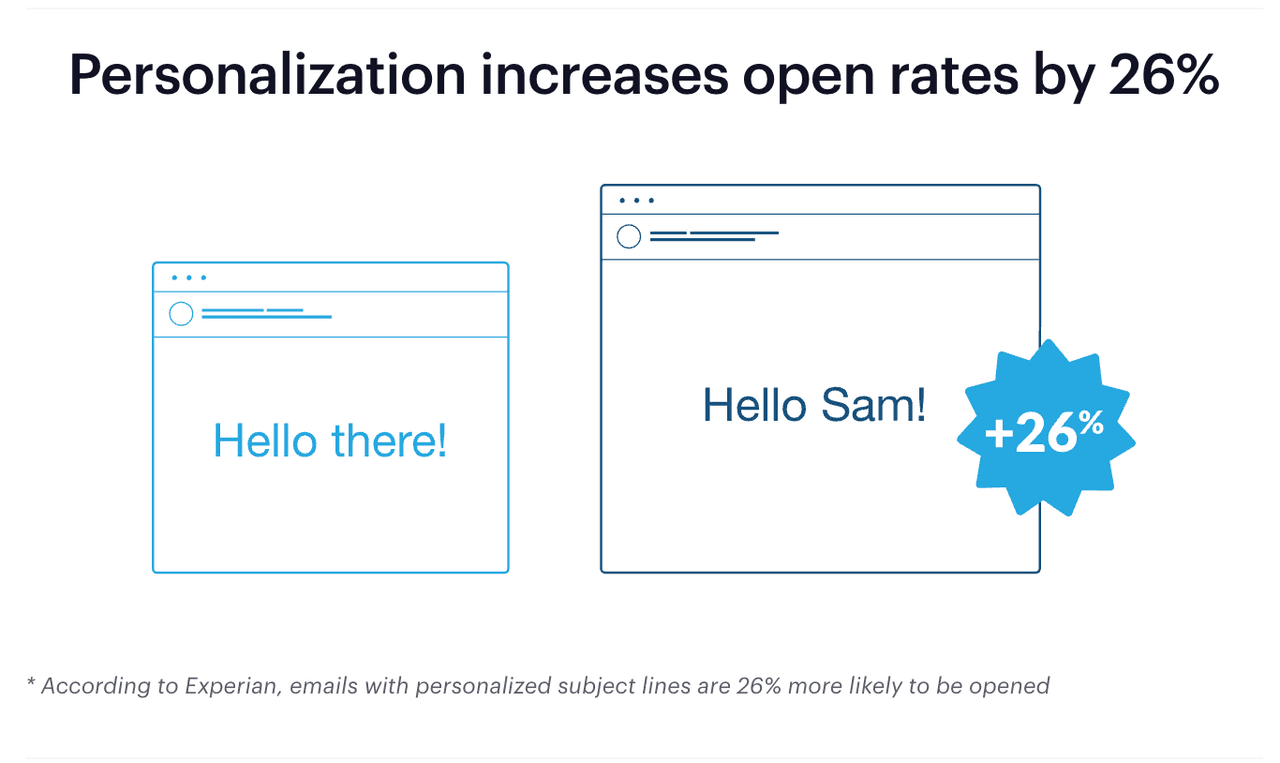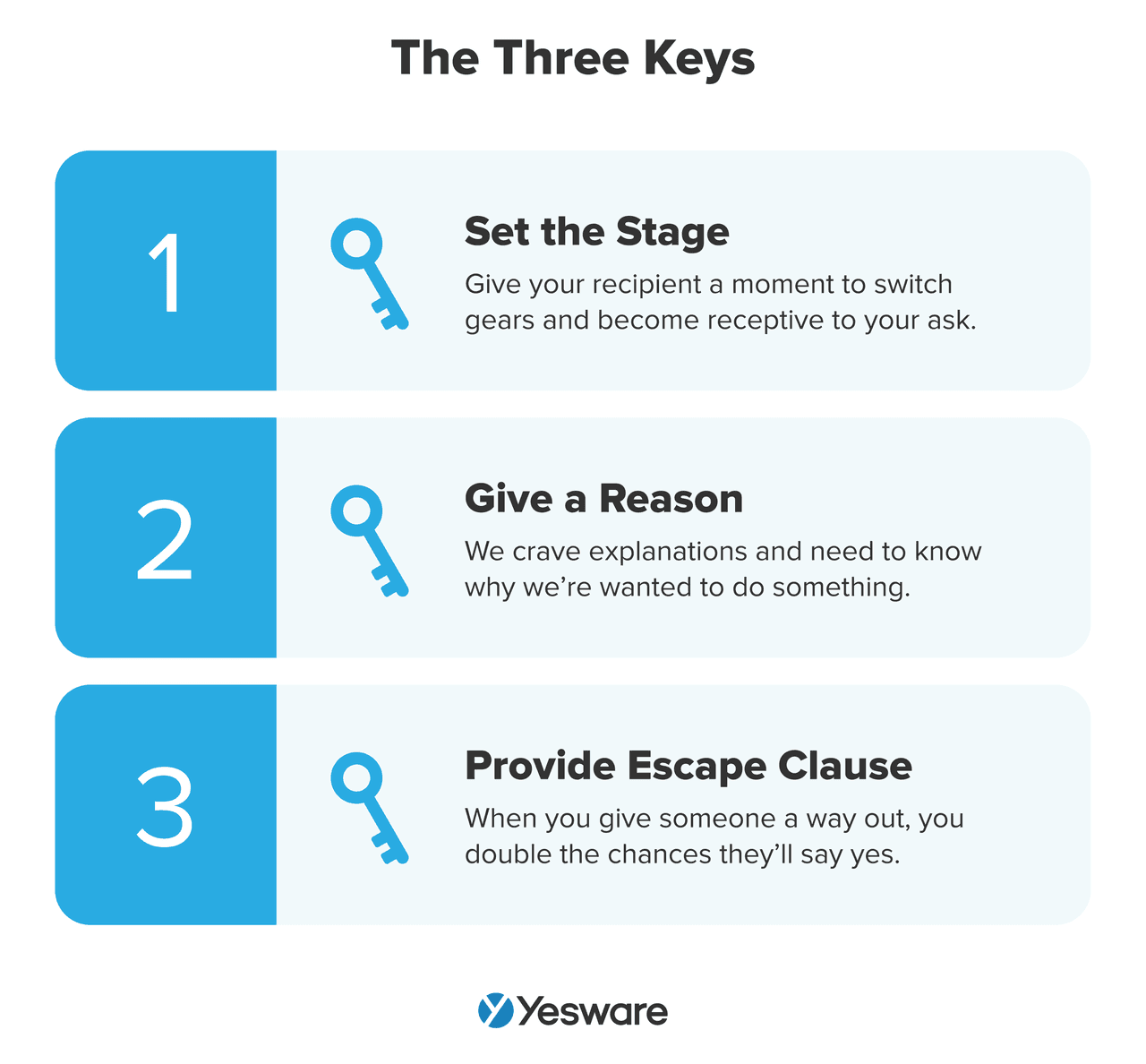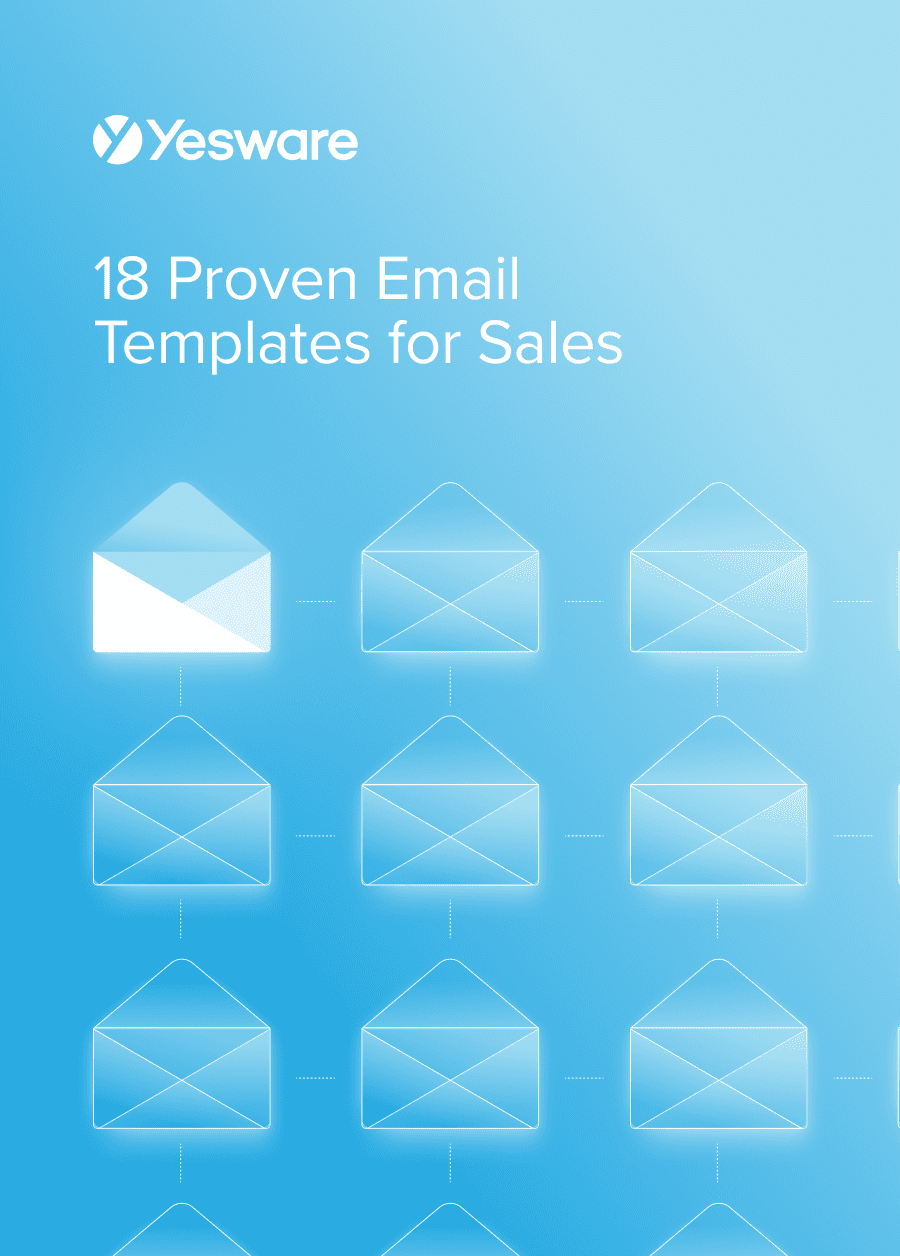How to Introduce Yourself in an Email the Right Way [Examples & Templates]
Jenny Keohane
It’s almost too easy to ignore a message that comes from a stranger – you don’t owe them anything. That’s why it’s important to provide value in your introduction.
When sending a cold email – you need to introduce yourself in a way that’ll hook your recipient. This means gaining their trust right from the start.
From the subject line and greeting to the close, we’ll look at all of the important elements of an introduction email plus our favorite tips and templates.
Here’s what we’ll cover:
- How to Introduce Yourself in an Email
- 10 Tips for Introducing Yourself
- Introduction Email Templates
- Introduction Subject Line Examples
How to Introduce Yourself in an Email
No matter what kind of introductory email you’re sending, there are key elements that you should always include.
Your introduction email should include:
- Subject Line: A short and concise yet enticing subject line so your introduction inside gets read.
- Greeting: Greet your recipient in a polite and professional way and always use their name.
- Introduction: Who you are — such as your name, position, and company.
- The Why: Concisely explain why you’re reaching out (mentioning a connection here is key).
- The Ask: Include a clear call to action.
- Closing/Sign off: Always thank them for their time and sign off with your name and contact information.
Now, let’s look at how to accomplish each of these steps with our favorite tips below.
Top 10 Tips for Introducing Yourself in an Email
1. Encourage an Open With Your Subject Line
There’s no point in perfecting your introduction email if your email doesn’t get opened in the first place.
This is why your email subject line is so important.
Your subject line should speak to what’s inside your email. Don’t be deceiving, but also make sure it’s intriguing enough that’ll encourage the recipient to open.
Personalization here is key to generating opens.

Here are some of our top tips for making sure your subject line leads to an open:
- Be clear and concise
- Mention a connection
- Appeal to emotion
- Use their name
- Ask a question
- Provide value
2. Greet The Recipient Appropriately
Before we get into the introduction, it’s important that you’re greeting the recipient appropriately and professionally.
According to studies, the best email salutation may be the most obvious: “Hi {!First Name}.”
Try using “Hello” and “Hi” rather than “Hey” in professional emails to avoid coming off as non-professional or too casual.
Grammarly suggests the 6 best ways to start an email are:
- Hi {!Name},
- Dear {!Name},
- Greetings,
- Hi there,
- Hello, or Hello {!Name},
- Hi everyone,
Your email greeting is your recipient’s first impression of you – so play it safe. The last thing you want is for the recipient to click away before getting to the actual context of your message.
3. Make the First Line About Them
How do you make the first line of your email resonate with recipients? Make it about them.
This will help grab their attention right off the bat. Here are some examples:
- I saw your post about [topic]
- I noticed you manage [team]
- Congratulations on [achievement]
- Great insights on [topic]
- I’m inspired by the work you’ve done on [field]
The best way to hook your recipient right away is to acknowledge them and make it known you’ve done your research.
They’re likely to have a more positive impression of you when you start your email on a high note (because who doesn’t like reading about themself).
4. Find a Shared Uncommon Commonality
People want to be around others who share their attitudes, values, and preferences.
It’s the Similarity-Attraction Effect.
Interacting with people who share your beliefs or interests validates your own feelings.
How to introduce yourself in an email this way: Look for uncommon commonalities you might share with your prospect:
- Search social media for a shared interest, hobby, like, or dislike
- Reference the shared interest at the beginning of your conversation
Check your prospect’s LinkedIn, Twitter, Google, and public Facebook profiles for shared backgrounds, hobbies, likes, dislikes, etc.
Do you have something in common that’s not particularly common?
Mention it in your email. Highlighting unusual similarities — especially in initial outreach — could be the leg up you need to get a reply from someone who might otherwise ignore you.
5. Bring up a Mutual Connection
Nine out of 10 people trust recommendations from others they know.
Bringing in a mutual connection can change the way your recipient sees you. You transform from someone reaching out to another person, just like them.
How you can do this: Find a mutual connection on LinkedIn. On their LinkedIn profile, this is displayed right under their name and headline.

Let your recipient know about the connection and include how you know the person. Chances are, your recipient will let the person know you reached out.
Another strategy is to include positive details about the connection. How we talk about other people reflects how people see us. If you say something nice about someone, people will associate those traits with you.
6. Connect by Asking for Advice
A good way to connect with someone before introducing yourself in an email?
Show that you value their opinion.
Humans love to talk about themselves. We spend about 40 percent of our day doing it.
How to introduce yourself in an email this way: Ask for your recipient’s opinion because it truly matters to you.
According to Keith Ferrazzi’s best-selling novel Never Eat Alone, here are three elements you need to address:

- Set the stage: Give your recipient a moment to switch gears and become receptive to your ask.
- Give a reason: We crave explanations and need to know why we’re wanted to do something.
- Provide an escape clause: When you give someone a way out, you double the chances they’ll say yes.
7. Create a Positive Impression by Congratulating Them
Flattery creates a positive impression on you and your company. Stay on top of their company announcements so you can be the first to congratulate them.
Studies indicate that insincere and genuine flattery are equally effective. So, even if your recipient knows your ulterior motives, they will still think highly of you.
How to do this: Look at their LinkedIn for personal/professional accomplishments such as recent promotion/title change, work anniversary, a publication of an article, etc.
8. Consider an Act of Generosity
If you help someone advance their goals, they’ll feel obliged to return the favor.
That’s because of the Law of Reciprocity.
In an experiment, waiters provided customers with a piece of candy then let them select a second candy before leaving the bill.
Their tips increased by 21%.
People feel obliged to return an act of generosity (even when they didn’t ask for it in the first place).
How to do this:
- Find a piece of content that would help your recipient in their role
- Link to the content in your email, explaining upfront that you thought they might find it useful
- Offer to introduce them to someone that would ultimately benefit them
Before you ask your recipient for anything, try to provide value first.
9. Include a Professional Closing
Now that you’ve got your email introduction down, it’s important to close off your email on a professional note.
Always close your emails with a CTA/call to action and email signature with your name, job title, and contact information.
Using an image in your signature helps the recipient to put a face to the message which instinctively makes the email more personable.

10. Last but Not Least: Always Proofread & Follow Up
It’s self-explanatory, but important to point out.
Your introduction email sets the tone for the rest of your interactions with the recipient. The last thing you want is grammatical errors and mistakes in your email.
So, never click send without proofreading. And if you’re on the go and don’t have time to double-check your emails, get a free tool like Grammarly to spell check for you.
When it comes to following up, remember that people are busy and can forget to respond or miss initial emails. Give it a few days and send a gentle reminder, reiterating your introduction and ask.
Introduction Email Templates
Now, let’s look at this in action.
We’ll look at how to introduce yourself in an email for various situations.
Make sure to save these as email templates. Make them your own with merge fields and personalization.
General Professional Email Introduction
Hi {!First Name},
My name is {!Your Name} and I {!connection to recipient}. I’m reaching out to you because {!specific explanation}.
I hope to {!call to action},
Thank you for your time and I look forward to hearing back.
Sincerely,
{Your name}
Sales Cold Email Introduction
Hi {!First name},
Congratulations on {!Company announcement}. I hope you and your team are taking some time to celebrate the accomplishment.
I’m sure you’re very busy, but I’d love to get your take on how {!Product/service} could solve {!pain point}.
Do you have 10 minutes sometime over the next couple of weeks to chat? Feel free to book some time on my calendar: {insert calendar link}.
All the best and congrats again!
{Your name}
Job Application Email Intro
Dear {!First name},
My name is {!Your Name} and I {!brief introduction}. I saw your job posting on {!Website} and am very interested in the position. I believe I’m a strong candidate for this position because {!your experience}.
Please find my attached {!cover letter/resume} below. If I can provide you with any further materials, please don’t hesitate to reach out. You can email me at {!email address} or call me at {!phone number}.
Thank you so much for your time and consideration.
Sincerely,
{Your name}
Referral Email Introduction
Hi {!First Name},
I hope this note finds you well and {!personal note}.
My name is {!Your name} and I’m {!Job title} at {!Company}. I’m reaching out because {!Mutual connection} (CC’d here) mentioned that {!reason for refferal}.
I understand from {!Mutual connection} that {!reason for connect}. I believe I can help by {!solution}.
I’d love to schedule some talk to talk, {!call to action}.
Thank you for your time and I look forward to hearing back.
Sincerely,
{Your name}
Follow-up Email When Meeting at Event
Hi {!FirstName},
It was great meeting you at {!Event where you met}. I loved learning more about {!something discussed}.
I’m really interested in hearing more about your role as {!Job title} at {!Company}, as {!reason why you’re interested}. If you have time in the coming weeks, let’s {!follow-up action}.
I’m generally free on {!Days of the week}, does one of those work for you?
Looking forward to keeping in touch!
{Your name}
 18 Proven Email TemplatesWinning email templates for cold outreach, follow-ups, and nurturing relationships – backed by data and real-world examples.
18 Proven Email TemplatesWinning email templates for cold outreach, follow-ups, and nurturing relationships – backed by data and real-world examples.Tip: See real-life introduction emails here → intro sales emails
Email Introduction Subject Line Examples
Lastly, let’s look at some subject line examples for your introduction emails that’ll get recipients to open.
First, we’ll look at general introductory subject lines you can use for various situations. Then, some enticing cold email subject lines that’ll get prospects wanting to know more.
General Introductory Subject Lines
- Introduction from [Name]
- Referred by [Name]
- [Name], How are you?
- Nice to e-meet you!
- Contacting you about [topic]
- [Referral] told me [personal note]
- I found you through [network/connection]
- [Name], would love to connect
- Hello [Name], [personal note]
- Can you help me with [topic]
- Looking to connect about [topic]
- Introduction from [Company]
Sales Cold Email Subject Lines
- [Name], is there too much on your plate?
- [Company] + [Company] collaboration
- Remove the [pain point] from [task/activity] today
- [Relevant topic] resources that can help right now
- Save [number of hours] per week with [Product/Service]
- [X] tips for solving [pain point]
- Hi [Name], we met at [Conference]
- [Name] suggested I reach out
- Looking to connect about [topic]
- [Simlilar Company] saw [outcome] with [Product/Service]
- I want to help you achieve [goal]
- [Store] gift card for 15 minutes of your time
- Congrats on [achievement]
Conclusion
Knowing how to introduce yourself in an email is an important skill. Try executing these tips and monitor the results.
The most essential tip you can remember is to always give clear reasoning for reaching out. Introduce yourself to others as you’d like someone to introduce themselves to you; polite, concise, and direct.
Enter their inbox with confidence, right from the start.
Get sales tips and strategies delivered straight to your inbox.
Yesware will help you generate more sales right from your inbox. Try our Outlook add-on or Gmail Chrome extension for free, forever!
Related Articles
Jenny Keohane
Jenny Keohane
Jenny Keohane
Sales, deal management, and communication tips for your inbox
![How to Introduce Yourself in an Email the Right Way [Examples & Templates]](/blog/_next/image/?url=https%3A%2F%2Fwww.yesware.com%2Fwp-content%2Fuploads%2F2021%2F10%2Fyesware-how-to-introduce-yourself-in-an-email-1.jpg&w=1984&q=75)
